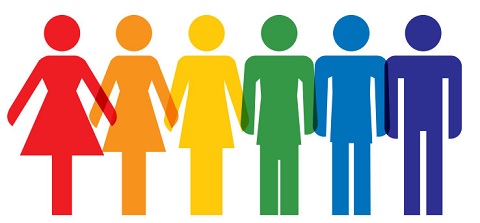Chip in to keep stories like these coming.
The predictable clamour that followed the passage of anti-labour Bill C-377 by the Senate just before it rose on June 30 all but drowned out another retrograde move: the upper house permitted Bill C-279, on transgender rights, to die on the order paper. Debate on passage was deliberately delayed by government Senate leader Claude Carignan, effectively killing it.
NDP MP Randall Garrison’s private member’s bill would have added gender identity provisions to both the Criminal Code and the Canadian Human Rights Act, extending protection against hate crimes to transgender individuals.
The tortuous trajectory of C-279 says much about the dark side of our society. A similar bill (C-389) was introduced to the House of Commons by former MP Bill Siksay in 2009, and managed to pass third reading in 2010, but Parliament was dissolved before it could reach the Senate.
It was reintroduced in September 2011 by Garrison, and was passed in 2013 with 18 Conservatives supporting it, including the late Jim Flaherty and then-minister John Baird. But Stephen Harper strongly opposed it, as did the vast majority of the Conservative caucus.
The bill then went to the Senate, where it sat gathering dust for 20 months. Then it was effectively gutted by Conservative senators earlier this year. With Senator Don Plett leading the charge, the Senate amended the bill to exempt such venues as prisons, crisis centres and public washrooms from its protection, based upon the outmoded notion that trans women are really just males in drag.
In short, after six years of hard work to enshrine rights and protections for transgender people in the Canadian Human Rights Act and the Criminal Code, the Senate effectively killed a corpse on June 30.
One wonders what all the fuss was about. But one doesn’t have to dig too deeply to answer that question.
The transgender phenomenon is poorly understood by most people. Even the word “transgender” is misleading: the social construct of “gender” is not being transcended, but reinforced. The same male/female binary persists in a different guise.
The debate, however, is not whether or not transgenderism is based upon faulty and essentialist notions of gender. For trans folks living their often difficult daily lives, this is hardly worth discussing. They are what they are, and why shouldn’t they be?
But they stand for something that is anathema to social conservatives and uncomfortable for many others: the notion that gender is fluid and social, not innate.
Feminists have long countered the constraints of gender: the alleged “role” of women in society has been vigorously contested for decades now, every move toward equal status met by fierce opposition.
The arguments against their progress have been based upon a hodgepodge category rooted in fallacious ideas about biology and innate differences. But they are no less real for all of that. We may explain away “gender,” or “race,” for that matter, as mere constructs, but the power that lies behind them has shackled women and racialized people for centuries, imposing untold misery.
Nevertheless, in an historical blink of an eye, the idea of a woman’s “role” in society has been fundamentally altered. In fact, it is probably safe to say that the very notion of role has been shattered. The notion, for example, of “women’s work” has long fallen by the wayside in mainstream society.
That is not to say that women’s struggle has been won, however — not by a long shot. “Gender” still claims its victims every day. Ask anyone involved in the ongoing fight for access to abortion, for example. Or take note of university presidents who claim, absurdly, that some areas of study are dominated by men because of their innate superior abilities.
Transgender individuals, by their very existence, challenge these conventional biological notions of gender. They throw into question people’s comfortable sense of gender identity, to which they cling: how solid is it, really? It is not surprising, then, that so-called “transphobia” (literally, “fear of the beyond”) raises its ugly head everywhere, as it just did in the Senate.
Thanks to unelected legislators, trans people remain vulnerable to open discrimination and even violent physical assault in Canada just because of who they are, unprotected by rights legislation and Criminal Code hate crime provisions.
In the final analysis, it all comes down to basic human decency. Why not live and let live? Bill C-279 was an attempt to counter prejudice, discrimination and blind hatred. It died because those forces proved momentarily stronger. Let us hope that a new government will move quickly to correct this shameful leap backwards.
This article originally appeared in the Toronto Star on July 7.



